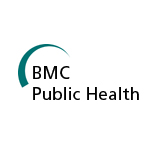
This review is part of a BMC supplement series – Technical inputs, enhancements and applications of the Lives Saved Tool (LiST)
Background
Annually over 520,000 newborns die from neonatal sepsis, and 60,000 more from tetanus. Estimates of the effect of clean birth and postnatal care practices are required for evidence-based program planning.
Objective
To review the evidence for clean birth and postnatal care practices and estimate the effect on neonatal mortality from sepsis and tetanus for the Lives Saved Tool (LiST).
Methods
We conducted a systematic review of multiple databases. Data were abstracted into standard tables and assessed by GRADE criteria. Where appropriate, meta-analyses were undertaken. For interventions with low quality evidence but a strong GRADE recommendation, a Delphi process was conducted.
Results
Low quality evidence supports a reduction in all-cause neonatal mortality (19% (95% c.i. 1–34%)), cord infection (30% (95% c.i. 20–39%)) and neonatal tetanus (49% (95% c.i. 35–62%)) with birth attendant handwashing. Very low quality evidence supports a reduction in neonatal tetanus mortality with a clean birth surface (93% (95% c.i. 77-100%)) and no relationship between a clean perineum and tetanus. Low quality evidence supports a reduction of neonatal tetanus with facility birth (68% (95% c.i. 47-88%). No relationship was found between birth place and cord infections or sepsis mortality. For postnatal clean practices, all-cause mortality is reduced with chlorhexidine cord applications in the first 24 hours of life (34% (95% c.i. 5–54%, moderate quality evidence) and antimicrobial cord applications (63% (95% c.i. 41–86%, low quality evidence). One study of postnatal maternal handwashing reported reductions in all-cause mortality (44% (95% c.i. 18–62%)) and cord infection ((24% (95% c.i. 5-40%)).
Given the low quality of evidence, a Delphi expert opinion process was undertaken. Thirty experts reached consensus regarding reduction of neonatal sepsis deaths by clean birth practices at home (15% (IQR 10–20)) or in a facility (27% IQR 24–36)), and by clean postnatal care practices (40% (IQR 25–50)). The panel estimated that neonatal tetanus mortality was reduced by clean birth practices at home (30% (IQR(20–30)), or in a facility (38% (IQR 34–40)), and by clean postnatal care practices (40% (IQR 30–50)).
Conclusion
According to expert opinion, clean birth and particularly postnatal care practices are effective in reducing neonatal mortality from sepsis and tetanus. Further research is required regarding optimal implementation strategies.
2 comments